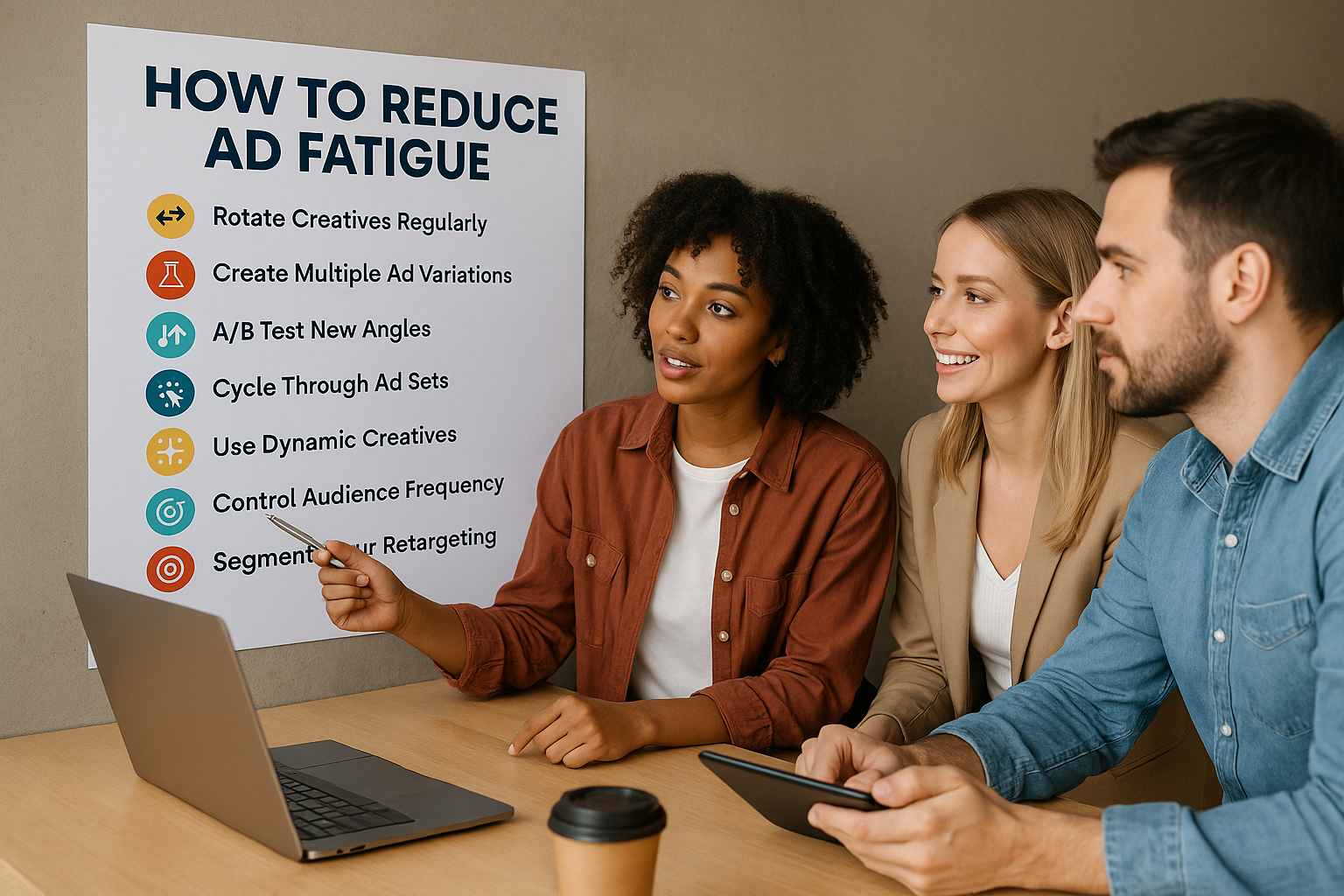Even the best ad eventually stops working.
If your campaign was converting, but suddenly performance drops — CTR is down, CPC is up, and leads dry up — chances are, you’re dealing with ad fatigue.
Ad fatigue happens when your audience has seen the same ad too many times, and it no longer gets attention or drives action.
In this article, you’ll learn how to identify ad fatigue, how to refresh your campaigns, and how to build a strategy that keeps your ads performing over time.
What Is Ad Fatigue?
Ad fatigue occurs when your target audience becomes overexposed to your ads, leading to a drop in engagement and results.
It typically shows up as:
- ⬇️ Drop in click-through rate (CTR)
- ⬆️ Increase in cost per result (CPC, CPA)
- ⬇️ Lower conversion rates
- ⬆️ Higher frequency (same people seeing your ad repeatedly)
The problem isn’t your offer — it’s that your creative no longer grabs attention.
How to Identify Ad Fatigue in Ads Manager
Check these key metrics:
✅ Frequency
- Ideal: Under 2.5 for most cold audiences
- Problem: 3.0+ = people are seeing your ad too often
✅ CTR (Click-Through Rate)
- If CTR is dropping week over week, people are ignoring your ad
✅ Cost per Result
- If cost per lead/sale is rising — but nothing else changed — fatigue is likely
🧠 Tip: Compare performance week-by-week. Sudden changes = likely ad fatigue.
7 Proven Ways to Reduce Ad Fatigue
🔁 1. Rotate Creatives Regularly
Don’t run the same ad for weeks or months.
✅ Refresh creatives every 10–14 days for cold audiences
✅ For warm audiences (retargeting), rotate weekly or use multiple versions
🖼️ 2. Create Multiple Ad Variations
Use 3–5 variations in every campaign:
- Video vs. image
- Different headlines or hooks
- Alternate CTAs
- Story format vs. feed format
💡 Meta’s algorithm will auto-optimize for the best-performing version.
🧪 3. A/B Test New Angles
Even if your format is the same, the message matters.
Test different emotional angles:
- Pain-focused: “Tired of wasting money on ads?”
- Aspiration-focused: “Get more leads in less time.”
- Social proof: “Over 3,000 marketers use this tool.”
🔄 4. Cycle Through Ad Sets
Instead of running the same audience forever:
- Rotate between 2–3 interest or lookalike groups
- Pause underperformers and relaunch after a rest period
This keeps your reach fresh — without adding new cold traffic sources.
🛠️ 5. Use Dynamic Creatives (Meta Ads Only)
Meta’s Dynamic Creative tool lets you upload:
- Multiple headlines
- Text options
- Images/videos
- CTAs
It mixes and matches to find the best combo for your audience — reducing fatigue automatically.
⏳ 6. Control Audience Frequency
Limit how often people see your ad by:
- Splitting your campaign into frequency-controlled ad sets
- Using Reach + Frequency campaign type (for awareness goals)
- Setting custom rules (e.g., pause ad if frequency > 3.5)
This works especially well for retargeting campaigns.
🎯 7. Segment Your Retargeting
Don’t treat all warm leads the same.
Break retargeting into:
- 1–3 day viewers
- 4–7 day non-converters
- 14–30 day reminders
Serve different creatives based on recency and behavior.
Best Practices to Avoid Ad Fatigue from the Start
- Launch with multiple creatives, not just one
- Use storytelling formats like reels or carousels
- Keep ad copy fresh, casual, and human
- Test new angles every month, even if current ads still convert
- Monitor frequency and CTR weekly — not monthly
Bonus: Creative Refresh Checklist
When refreshing ads, try these quick switches:
✅ New headline (change the hook)
✅ Short vs. long primary text
✅ Different color background
✅ Add or remove testimonials
✅ Use UGC-style video (phone-shot, authentic)
✅ Flip the angle: pain → solution or logic → emotion
Small changes = fresh feel, without starting from scratch.
Final Thoughts: Consistency Beats Complexity
You don’t need 100 creatives or a full production team.
You just need to consistently watch your metrics and stay one step ahead of fatigue.
Rotate, refresh, retest.
That’s how you keep campaigns performing — long after others fade out.
